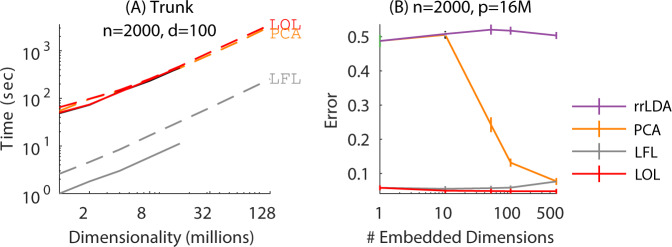Fig. 2. Computational efficiency and scalability of LOL using n = 2000 samples from spherically symmetric Gaussian data (see Supplementary Note 3 for details).
A LOL exhibits optimal (linear) scale up, requiring only 46 min to find the projection on a 500 gigabyte dataset, and only 3 min using LFL (dashed lines show semi-external memory performance). B Error for LFL is the same as LOL in this setting, and both are significantly better than PCA and rrLDA for all choices of projection dimension, regardless of whether a randomized approach is used to compute the projection dimensions. Note that while similar scalability enhancements can be made to PCA in (A), our focus is to highlight that LFL maintains the high performance of LOL in comparison to PCA in (B) despite the randomization technique.

